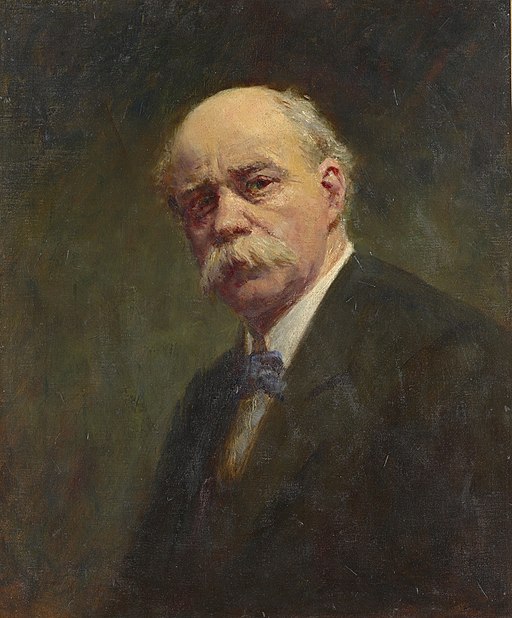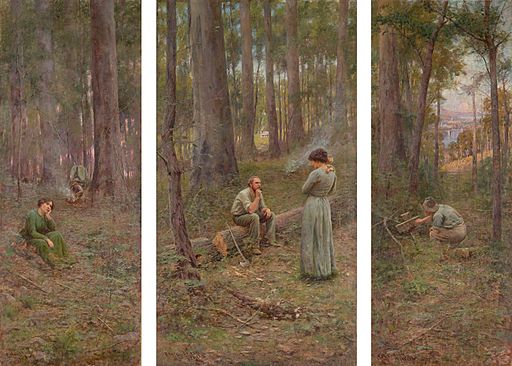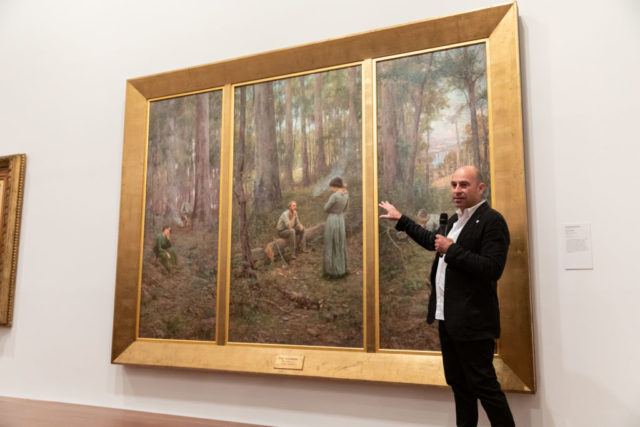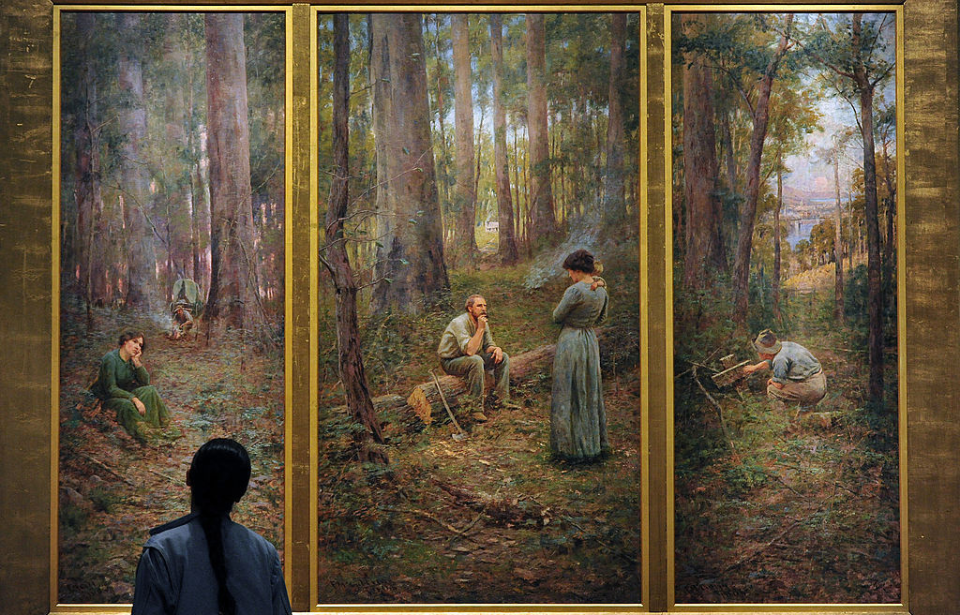The painting The Pioneer is heralded as one of the great Australian masterpieces, earning itself a home in the National Gallery of Victoria. The piece spans three panels, detailing a beautiful natural scene of a young pioneer family that’s just settled on their cleared land. Yet what was hidden underneath the paint could prove to be far more valuable and mysterious than the original work of art.
Frederick McCubbin
Frederick McCubbin was a well-known art teacher and artist during the late 1800s and early 1900s. He was born on February 25, 1855, to a family of eight children. Once he finished school he went on to attend several institutions including the Victorian Academy of the Arts, where his work was exhibited early in his career. It wasn’t until 1880 that he sold his first painting.

As an Australian, McCubbin made the landscape and surroundings that he called home the basis of his work. These paintings made him a notable name in the art world, earning him many awards throughout his later career. Most of the pieces he is best known for focus on the people that settled in the Australian bush, their experiences with the area, and what their lives there were like.
The Pioneer
The Pioneer is arguably McCubbin’s most famous work, depicting a farmer and his family attempting to make a life for themselves in the bush. Each of the panels shows a different scene helping to make up the story, although how it is interpreted is entirely up to the viewer. On the left, the farmer and his wife have clearly just arrived at the plot of land they selected; the woman is sitting in contemplation while the man tends to a fire in the background.

The center panel shows the same man, now sitting on a log, while the woman stands in front of him holding a baby in her arms. While the focal point of this painting is the forest around them, a small family home can be seen in the background. Instead of a small house, the final panel shows a large city in the background. In the foreground, a man crouches at a small grave marker among the trees. It is unknown whether he is supposed to be the same farmer or another individual.
A strange shape
As this is such a valuable painting, it was important that it be checked on even when the Australian gallery was closed during the COVID-19 lockdowns. This job fell to the head of conservation, Michael Varcoe-Cocks. One day he was walking through the gallery with the lights off, holding out a flashlight to inspect each of the paintings. When he reached The Pioneer he noticed something strange on the center panel.

“I noticed a form in the texture that didn’t relate to that final composition.” Captivated by what this could be, he decided to investigate. Knowing that x-rays had been taken of the painting in 2013, Varcoe-Cocks pulled them out for reference. They indeed showed a number of shapes underneath the paint that were completely unrelated to the final work. After thinking about it for a few days, he was able to associate the shapes with a photograph from their collection.
Found
The image was the only photograph in existence of McCubbin’s lost work, titled Found. The only reason art collectors even know of its existence is because of this very photo. Varcoe-Cocks was able to digitally overlay the image with the shapes on The Pioneer, only to find that it was a perfect match. As it turned out, The Pioneer had actually been painted over top of the older work. Found was a well-known piece when it was first finished, but the painting just never sold.
Varcoe-Cocks wonders if this was why McCubbin decided to paint over it and create something entirely new. Although this discovery is extremely exciting, as many thought Found was lost to time, there is one drawback. The painting can never be removed from the three panels, as it will destroy the famous work that was done over it.
More from us: Henry VIII Hid a Major Clue in a Painting That Might Identify His Favorite Wife
Instead, we’ll have to be content with knowing that when we visit The Pioneer, we’re actually viewing two masterpieces rather than one!
